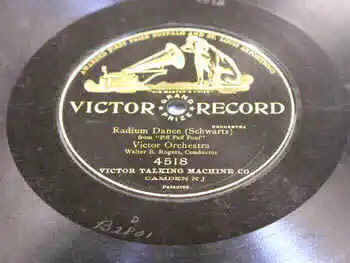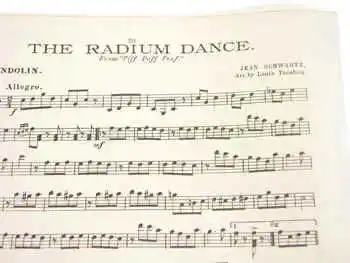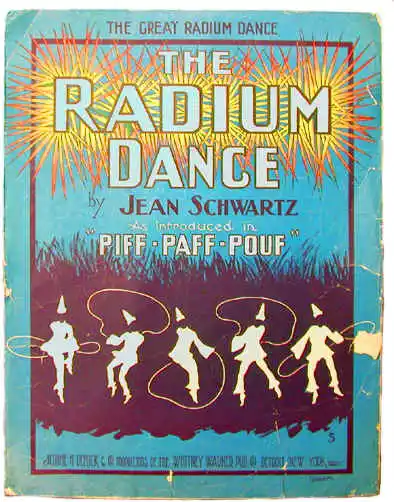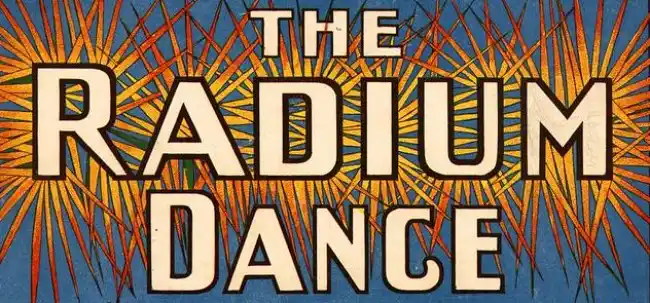
During the early 1900s, the thought of something containing or being about radium insinuated greatness, similar to how we think of the gold standard today. As a result, consumer products around the world played off the radium theme. As a matter of fact, radium even made its way to Broadway. Here is everything you need to know about the “Radium Dance” located at ORAU’s Museum of Radiation and Radioactivity:

1. Original debuted in Paris
The items in the collection consist of sheet music, a perforated metal polyphone disk (a polyphone is akin to a large music box), and a phonograph record. This version of the dance was performed in the Broadway musical "Piff, Paff, Pouf” (more on this later). The original "Radium Dance," a creation of American composer Loie Fuller, made its debut in Paris in 1904. Since that time, many renditions have made their way around the world, and they are all vastly different from the original.
2. Consisted of bright colors and amazing special effects
The “Radium Dance” that debuted on Broadway was characterized by having bright designs. The dancers would enter the stage with the lights turned off and then would spring out with glow in the dark costumes and other bright items. In a 1904 issue of the Guardian, it was described as follows:
"The lights go out, even the orchestral lights, the only visible thing is the conductor's baton which moves like a shoal of glowworms in the abyss. Suddenly appears a row of glowing white figures which might if they had faces be Pierrots; then skirts and bodices and sugar-loaf hats... the ghostly figures move phantastically, separate and intertwine and mingle in strange shapes... The part the audience played was to strike matches in the gallery to see how it was done."
3. Ties to radioluminescence

Around the same time the “Radium Dance” was making its way across the globe, a process known as radioluminescence was becoming popular. According to Paul Frame, Ph.D., who was a health physicist and trainer at ORAU and the founder of the museum collection, this process consisted of mixing radium with zinc sulfide of a particular type, which would glow in the dark. So, it makes sense that people would connect this scientific process with the glow in the dark presence of the costumes. However, despite the occasional claim that the glow-in-the-dark costumes were made with radium (Lionel Laurence, San Francisco Chronicle, May 29, 1904), the element was too scarce and valuable in 1904 to have been employed for such a purpose.
4. More about the musical
While many versions of the “Radium Dance” were performed in Europe and the United States, the most widely known version was the one that made its way into the musical "Piff, Paff, Pouf” which had a stint on Broadway. "Piff, Paff, Pouf," variously described as "comic opera" or a "musical cocktail," opened April 2, 1904, at the Casino in New York City. The show's creator/writer was Stanislaus Strange; William Jerome wrote the lyrics, and Jean Schwartz composed the music.
The show's title refers to three of its leading characters: Lord George Piffle, Macaroni Paffle and Peter Pouffle. The latter was played by Eddie Foy who three months earlier (December 30, 1903) had barely escaped the fire at the Iroquois Theatre by crawling through a sewer. Although it was not well regarded by many of the critics, the show was popular enough to enjoy an extended run until November 19, 1904.
Now that you know a little more about the “Radium Dance,” be sure to check out some of the other interesting items in ORAU’s Museum of Radiation and Radioactivity!
